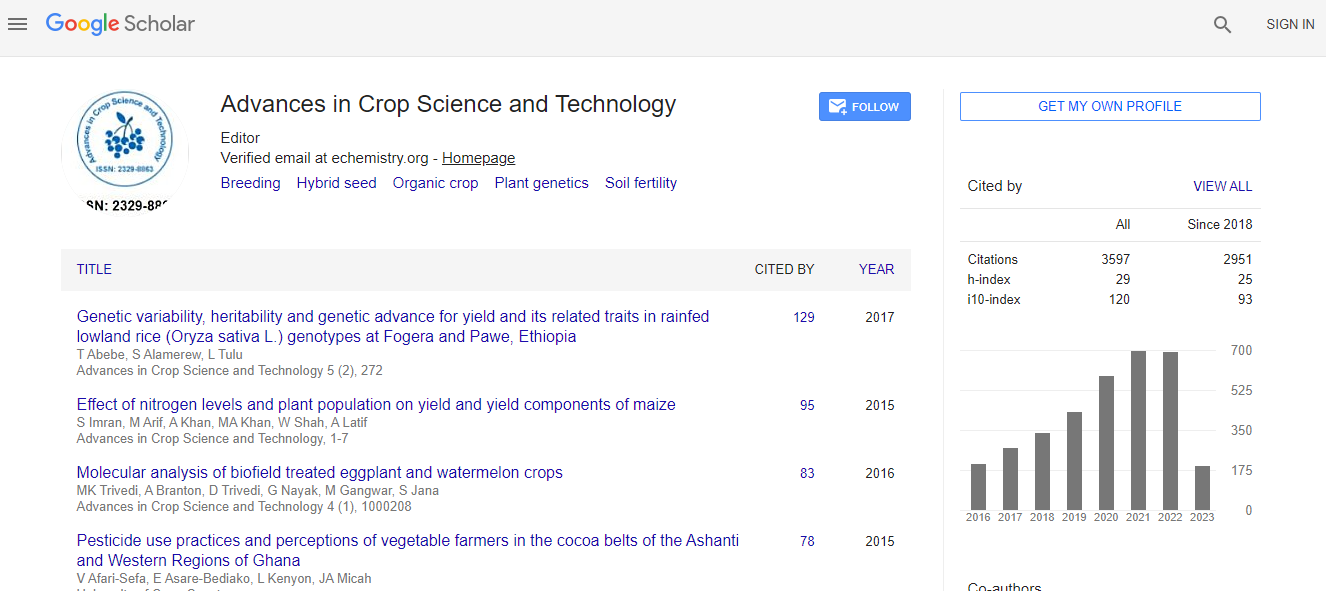Studies on Genetic Diversity in Upland Rice (Oryza sativa L.) Genotypes Evaluated at Gojeb and Guraferda, Southwest Ethiopia
*Corresponding Author: Awel Beshir, Department of Agricultural Research and Education, Bonga Agricultural Research Center, Bonga, Ethiopia, Email: awelbeshir234@gmail.comReceived Date: Jul 24, 2019 / Published Date: Jul 13, 2023
Citation: Beshir A, Alamerew S, Gebreselassie W (2023) Studies on Genetic Diversity in Upland Rice (Oryza sativa L.) Genotypes Evaluated at Gojeb and Guraferda, Southwest Ethiopia. Adv Crop Sci Tech 11: 594.
Copyright: © 2023 Beshir A, et al. This is an open-access article distributed under the terms of the Creative Commons Attribution License, which permits unrestricted use, distribution and reproduction in any medium, provided the original author and source are credited.
Abstract
The study was conducted using thirty six upland rice genotypes during the 2017 main rainy season at two experimental sites of Bonga agricultural research center; southwestern Ethiopia to classify and identify groups of similar genotypes and thereby estimate the genetic difference between clusters of the genotypes, the experiment was laid down in 6 × 6 simple lattice design. The combined analysis of variance over the two locations revealed that the genotypes showed highly significant (P ≤ 0.01) differences for all the characters studied, except for days to 50% heading, panicle weight, thousand seed weight, lodging incidences, leaf blast and brown spot. Similarly genotype × location interactions revealed highly significant (P ≤ 0.01) differences for panicle shattering and grain yield and significant (P ≤ 0.05) differences for days to 85% maturity, plant height, number of fertile tillers per plant, number of unfilled spikelets per panicle and biomass yield. The squared distance (D2) analysis grouped the 36 genotypes in to four clusters. This makes the genotypes become moderately divergent. The chi-square (x2) test showed that all inter-cluster squared distances was highly significant. The principal component analysis revealed that four principal components have accounted for 70.54% of the total variation.

 Spanish
Spanish  Chinese
Chinese  Russian
Russian  German
German  French
French  Japanese
Japanese  Portuguese
Portuguese  Hindi
Hindi 
